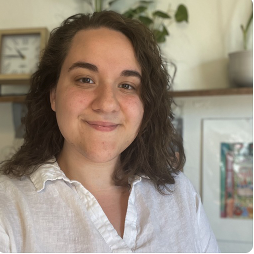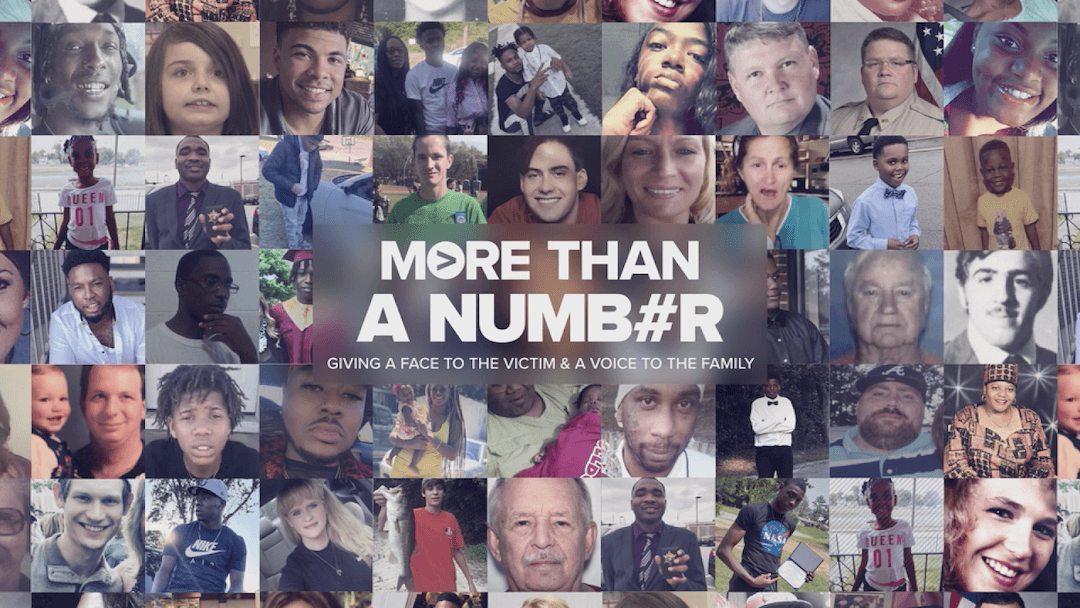On Aug. 31, two reporters from Gannett’s USA Today Network were in the fishing town of Suwanee, Florida, covering the aftermath of Hurricane Idalia, when they spotted smoke.
Douglas Soule, a First Amendment reporter, and Alicia Devine, a Tallahassee Democrat photographer (and Florida’s 2021 photojournalist of the year), traced the smoke to a house, where it was pouring out thick from the roof.
“We need buckets,” someone yelled.
Soule and Devine grabbed a trash can and joined a crew of people pulling water out of the Suwannee River in an attempt to save the house.
“As journalists, it’s our job to show others what is happening, to document the immediate history of events. Historically, journalism ethics taught us to stay out of the way and to not get involved while we’re reporting. But in some cases, in the moment, journalism can’t help,” their colleague Ana Goñi-Lessan later wrote for the Tallahassee Democrat. “And journalism wasn’t going to help put out a house fire near the Suwannee River.”
Soule and Devine join a long line of journalists getting involved with their subjects, perhaps most famously Kevin Carter chasing a vulture away from a starving girl in Sudan and Anderson Cooper rescuing a young Haitian boy from looters. In both cases, journalists and members of the public fiercely debated whether it was appropriate for the reporters to become part of the story, and their actions have become enshrined in ethics classes across the country.
But “it’s a mistake for journalists to declare that they should never ever get involved because their profession requires that they remain in the camp of neutral observers,” said Kelly McBride, Poynter’s senior vice president and chair of the Craig Newmark Center for Ethics and Leadership.
“Journalists, like all human beings, have an ethical obligation to help people in immediate need, when they can and when there is no one else around to do it,” she said. “They have to balance this against their obligation to observe and report what they see. But it’s truly rare that helping out makes documenting the story impossible.”
When a life is at risk, McBride said, “a journalist should absolutely step in.” The more qualified the journalist is — if they have, say, first aid training or a medical kit — the greater their ethical obligation to help.
“And sometimes, many times,” McBride said, “simply being an able-bodied adult makes you qualified.”
In this case, although nobody’s life was at risk, someone’s home was in jeopardy and there weren’t any firefighters immediately around to try to put out the blaze.
“So everyone who was around had a duty to help out,” she said. “You balance that duty against the risk to yourself — you don’t have to put your own life in danger.”
Ultimately, McBride said, this is about the ethics of being a good person. “There’s nothing about journalism ethics that undermines our obligations to first be a good human being.”
By Ren LaForme, managing editor
G/O Media replaces Gizmodo en Español staff with AI-powered translation service
G/O Media laid off its four-person Gizmodo en Español staff last week, replacing their original reporting with automated translations of English-language Gizmodo articles.
Editorial director Merrill Brown told Gizmodo staff in a memo last week that the move was the “first step” in the company’s efforts to offer its journalism in additional languages and that the coming months would see more of the company’s brands published in other languages. In addition to Gizmodo, G/O Media operates 10 other brands including Jezebel, The Root, A.V. Club, Deadspin and Quartz.
Some of the translations, which are powered by artificial intelligence, have included glaring errors, according to The Verge, which first reported the layoffs. At the end of each article is a link to the original English-language story and a disclaimer that there may be slight differences due to the nuances of automatic translation.
GMG Union posted on X, formerly known as Twitter, Wednesday that the four laid-off employees had a combined 25 years of experience at G/O Media but will not receive “adequate severance” due to the nature of their yearly contracts. The union also said G/O Media removed all bylines from the site, including those of the four former journalists.
“Unfortunately this move to eliminate the Español team represents yet another broken promise from G/O Media CEO Jim Spanfeller and Editorial Director Merrill Brown, who have repeatedly said that the company’s AI experiments were intended to supplement human writing, not replace it,” the union said on X.
The company started using AI-written content in July with an error-ridden article that sought to list the Star Wars movies and TV shows in chronological order. G/O Media spokesperson Mark Neschis did not answer questions about the Gizmodo en Español layoffs or the company’s planned AI projects and instead pointed to Brown’s memo announcing the switch to automated translations.
By Angela Fu, media business reporter
Medill survey shows higher-than-expected news engagement with teens
It’s an accepted part of lamenting the decline of news: The darn kids these days just don’t want to read it, too busy looking at their phones as Serious Adults talk about Serious Matters.
But … what if there was content on those phones? And what if some of that content … was news? That revelation is at the core of the News Socialization Study, commissioned by the Medill School at Northwestern University and released this week. Findings include:
- 29% of surveyed teens said they encounter news daily.
- 46% of surveyed teens saw local TV news daily or weekly, the single highest source for teen weekly news consumption.
- 42% encountered national network TV news daily or weekly.
- Roughly a quarter of surveyed teens said they engaged with news on social media on a daily or weekly basis.
- 75% of surveyed teens said they discussed news stories in class, while 62% followed the news for a class assignment and 59% said they talked about how to tell if information can be trusted.
Stephanie Edgerly, professor and associate dean for research at Medill, said the results are encouraging but there is more work to be done, particularly when it comes to news accessed via social media and the integrity of that information.
“We have much more to learn about what it means to have YouTube or Instagram be a teen’s door into news,” she said. “Those spaces invite many more questions than answers at this point.”
One other point in the study that stood out to me: News-related satire/comedy shows were outperformed by straight news programs when it came to teen engagement. Younger news audiences don’t need things to be dressed up in jokes or youth-oriented (and often laughably out-of-touch) verticals. They just want the news.
As an elder Gen Z, the “higher-than-expected” teen news engagement isn’t that surprising. A fair amount of patronizing assumptions are built into any talk on what young people are up to, and attempts to trivialize their interests are usually met with applause. But as a bloc, Gen Z is extremely civically engaged, in voter turnout, climate change activism and more.
Underestimating their want to understand what’s going on in the world and to be taken seriously as news consumers is a serious mistake.
By Annie Aguiar, audience engagement producer
Coalition announces $500 million fund to support local news
A coalition of 22 organizations — including the MacArthur Foundation, the Knight Foundation and Lenfest Institute for Journalism — announced Thursday that it will donate $500 million over the next five years to support local news.
The initiative, called Press Forward, aims to address the decline of local journalism, which has left 20% of Americans living in “news deserts,” where access to independent sources of local news is limited. The coalition has identified four major goals: strengthening local newsrooms, expanding access to necessary infrastructure and tools, reducing inequalities in coverage, and promoting public policies that support journalism and the First Amendment.
To achieve those goals, the coalition will issue grants from a pooled fund managed by the Miami Foundation. Knight Foundation president Alberto Ibergüen told The New York Times that this setup will be more convenient for media organizations since they will be able to access a range of foundations with a single application instead of having to apply to each one separately.
Though some funders will issue aligned grants this year, most of the grants from the pooled fund will be distributed starting in 2024. The coalition views this effort as vital to supporting democracy and will work with the bipartisan initiative More Perfect.
“The philanthropic sector recognizes the need to strengthen American democracy and is beginning to see that progress on every other issue, from education and healthcare to criminal justice reform and climate change, is dependent on the public’s understanding of the facts,” MacArthur Foundation president John Palfrey said.
By Angela Fu, media business reporter
Media tidbits and links for your weekend review
- The Dallas Morning News is devoting the month of September to helping readers understand the fentanyl crisis in North Texas. More than two dozen staffers spent months putting together the package, called “Deadly Fake: 30 Days Inside Fentanyl’s Grip on North Texas.” Executive editor Katrice Hardy wrote in a column about the project that the drug killed an average of five Texans every day last year and that the Morning News is publishing the series during back-to-school season because “there’s no conversation more important for parents to have with their kids than the one about fentanyl.”
- Puck’s Dylan Byers reports that MSNBC’s Jen Psaki will anchor Mondays at 8 p.m. Eastern, taking the slot from Chris Hayes, in addition to her Sunday show.
- Politico will reorganize its structure, including giving new leadership roles to current staffers. Here’s the announcement from Politico global editor-in-chief John Harris.
- This will make a lot of journalists sad. For NPR, Bill Chappell writes “Bruce Springsteen cancels a slate of concerts, citing peptic ulcer disease.”
- QZ’s Ananya Bhattacharya with a report that’ll make you long for the days of your trusty, rusty late-’70s Buick Regal: “Nearly every modern car shares or sells your data, according to Mozilla.”
- ProPublica’s Joaquin Sapien with “The Inside Story of How the Navy Spent Billions on the ‘Little Crappy Ship.’”
More resources for journalists
- Poynter will honor Anderson Cooper at the Bowtie Ball in Tampa, Florida, on Nov. 18. Learn how to get first dibs on tickets during a donor pre-sale event Sept. 5-10.
- Poynter Leadership Academy for Women in Media (Mar., May & Sept. 2024) — Apply by Sept. 8, 2023.
- Power of Diverse Voices: Writing Workshop for Journalists of Color (Nov. 15-18) (Seminar) — Apply by Sept. 15.
- Subscribe to Poynter’s Friday newsletter, Open Tabs with Poynter managing editor Ren LaForme, and get behind-the-scenes stories only available to subscribers.
Have feedback or a tip? Email Poynter senior media writer Tom Jones at tjones@poynter.org.
The Poynter Report is our daily media newsletter. To have it delivered to your inbox Monday-Friday, sign up here.








Comments